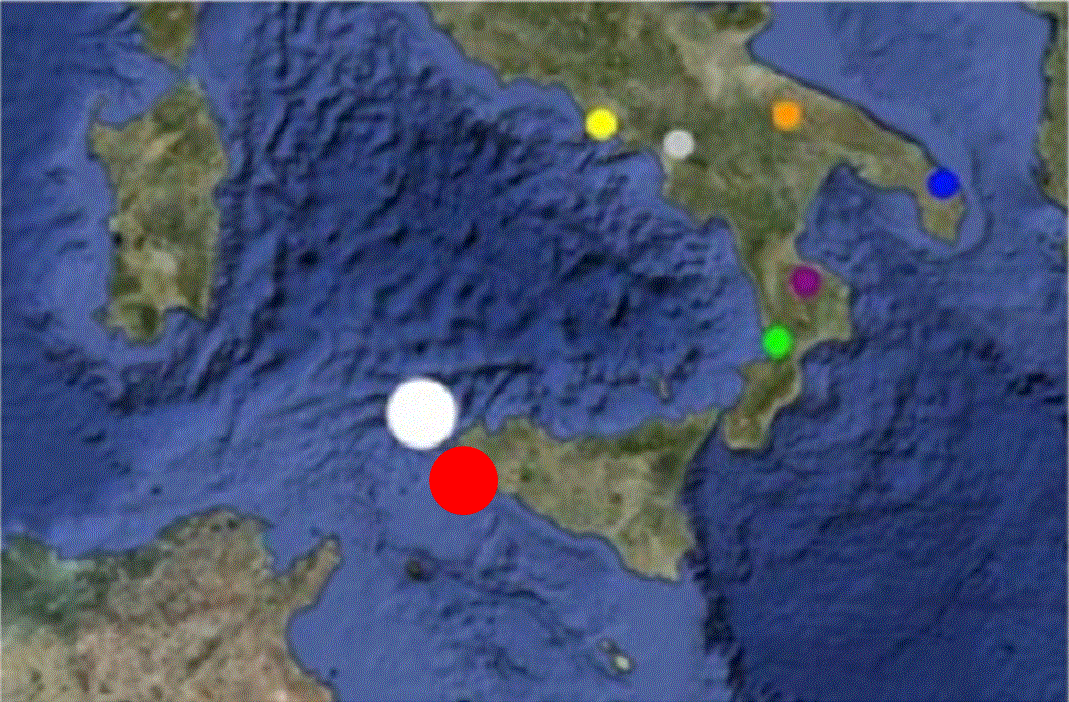Keyword
methane
2 record(s)
Type of resources
Available actions
Topics
Keywords
Contact for the resource
Provided by
Representation types
Update frequencies
Status
-

Le concentrazioni di metano sono misurate utilizzando l’analizzatore PICARRO G2401; tale strumento si basa sulla tecnologia Cavity-Ring-Down Spectroscopy (CRDS) che, dall’analisi dell’attenuazione di un segnale laser su un cammino ottico di 20 km, permette di valutare in modo accurato e selettivo le concentrazione dei gas. Lo strumento è stato tarato sulla base di miscele di taratura fornite dal World Calibration Center (NOAA-GMDL) della rete WMO/GAW. Ogni 48 ore vengono eseguite tarature di routine utilizzando working standard commerciali Instrument (Picarro G2401) is used to determine atmospheric methane. The instrument is connected by a Synflex 1300 (OD: ¼”) to the air intake manifold. Antiparticulate filter (Svagelock) are present at the instrument inlet. Scale and calibration: WMO-CH4-X2004 Once the implementation phase will be ended (end of summer 2015), two working standards will be used for automatic calibration every 48h. These working standard will be calibrated every month against two travelling/secondary standards which, on turn, will be calibrated, every six months against NOAA – GMDL reference cylinders (CB11039, CB11164, CB10928) hosted at the twin station “Lamezia Terme” and representing the laboratory primary standard. The working and secondary standards have CH4 mole fractions representing upper and lower ranges of the expected ambient variability. Working standards (50 lt, Alluminum tanks at 150bar) and travelling standards (10 lt, Aluminum tanks at 150 bar) are provided by RIVOIRA (Praxair). Two-stage stainless steel pressure regulators for high purity gas are used (Praxiar RSD2SX). Currently and until the end of the implementation phase, manual calibration against the two working standard is carried out every 14days/1month by ISAC-CNR operators. The link to the NOAA-GMDL standard at Lamezia Terme is still not effective, thus currently the instrument is running with factory calibration parameter. Data are recorded on a 5 sec basis by the Picarro internal PC and mirrored to a station server, then delivered in NRT mode to ISAC-CNR HQs in Bologna, where 1-minute average were calculated. Final aggregation to hourly average will be executed by using validated 1-min data. On hourly basis data will be flagged to identify “background” observations. This can be done both by considering wind sector (with the aim of selecting observations under sea breeze conditions, thus neglecting influence from in-land contributions) as well as by using de-spiking procedures as proposed by Thoning et al. [1989] . Information about instrument functioning and intervention are stored within an e-logbook. Instrument manual are present at the station. SOP are extracted by the: GAW Report No. 185 “Guidelines for the Measurement of Methane and Nitrous Oxide and their Quality Assurance”, GAW Report No. 192 “Guidelines for the Measurement of Atmospheric Carbon Monoxide”; GAW Report No. 213 “17th WMO/IAEA Meeting on Carbon Dioxide, Other Greenhouse Gases and Related Tracers Measurement Techniques”.
-

A Gas Chromatpgraph-FID (Agilent 6890N ) is used to measure methane (CH4), carbon monoxide (CO), nitrous oxide (N2O) and sulfur hexafluoride (SF6).
